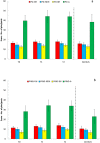Predicting the clinical performance of dental students with a manual dexterity test
- PMID: 29518127
- PMCID: PMC5843268
- DOI: 10.1371/journal.pone.0193980
Predicting the clinical performance of dental students with a manual dexterity test
Abstract
Dentists must be skilled when using dental mirrors. Working with mirrors requires spatial perception, bimanual coordination, perceptual learning and fine motor skills. Many studies have attempted to determine the predictors of manual skills among pre-clinical students, but consensus has yet to be reached. We hypothesized that valid and reliable occupational therapy test performance regarding indirect vision would differ between dental students and junior dentists and would explain the variance in manual skill performance in pre-clinical courses. To test this hypothesis, we applied the Purdue Pegboard test and O'Connor Tweezer Dexterity test under different conditions of direct and indirect vision. We administered these tests to students in phantom-head academic courses in 2015 and 2016 and to junior dentists. Students performed the tests at three time points: before phantom training (T0), at the end of the training (T1) and in the middle of the following year of study (T2). Dentists performed the same tests twice at 1st and 2nd trials one week apart. The results showed that indirect tasks were significantly more difficult to perform for both groups. These dexterity tests were sensitive enough to detect students' improvement after phantom training. The dentists' performances were significantly better than those of students at T0, specifically with regard to the use of tweezers under direct and indirect vision (the O'Connor test). A regression analysis showed that students' manual grades obtained at the beginning of the phantom course, their performance on the Purdue test using both hands, and their performance on the O'Connor test under indirect vision predicted phantom course success in 80% of cases. The O'Connor test under indirect vision is the most informative means of monitoring and predicting the manual skills required in the pre-clinical year of dentistry studies.
Conflict of interest statement
Figures



References
-
- Spratley MH. Aptitude testing and the selection of dental students. Austr Dent J. 1990;35: 159–168. doi: 10.1111/j.1834-7819.1990.tb05883.x - DOI - PubMed
-
- Boyle AM, Santelli JC. Assessing psychomotor skills: the role of the Crawford small parts dexterity test as a screening instruments. J Dent Educ. 1986;50: 176–179. - PubMed
-
- Schwibbe A, Kothe C, Hampe W, Konradt U. Acquisition of dental skills in preclinical technique corses: influence of spatial and manual abilities. Adv in Health Sci Educ. 2016;21: 841–857. - PubMed
-
- Suddick RP, Yancey JM, Wilson S. Mirror-tracing and embedded figures tests as predictors of dental students’ performance. J Dent Educ. 1983;47: 149–154. - PubMed
-
- Willis DO, Kincheloe JE. Teaching dental students mirror vision skills. J Dent Educ. 1983;47: 311–316. - PubMed
Publication types
MeSH terms
LinkOut - more resources
Full Text Sources
Other Literature Sources

